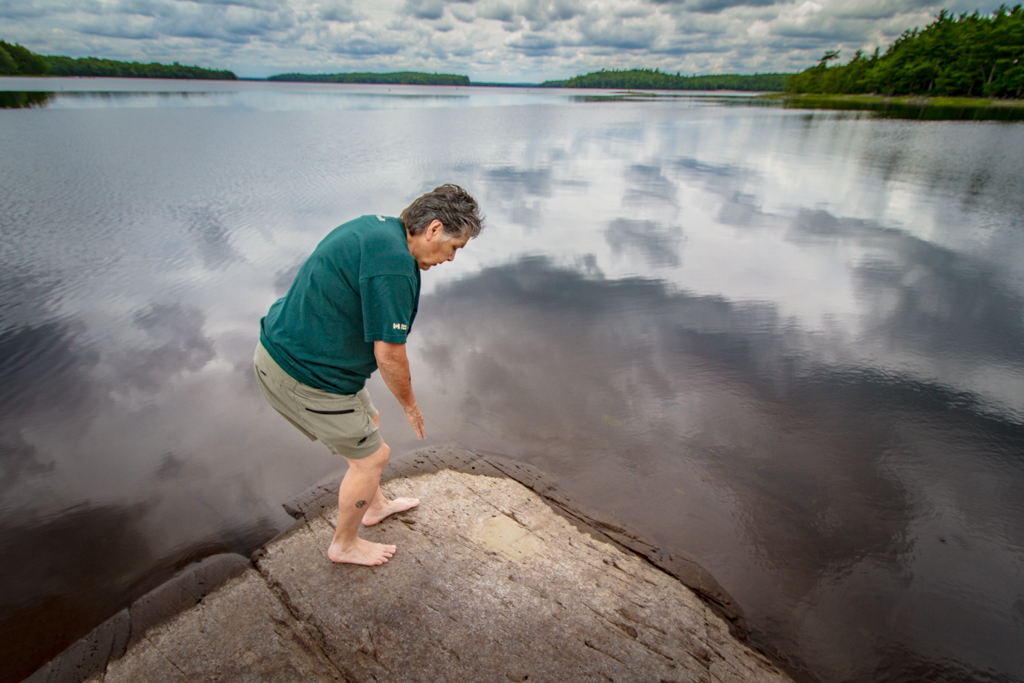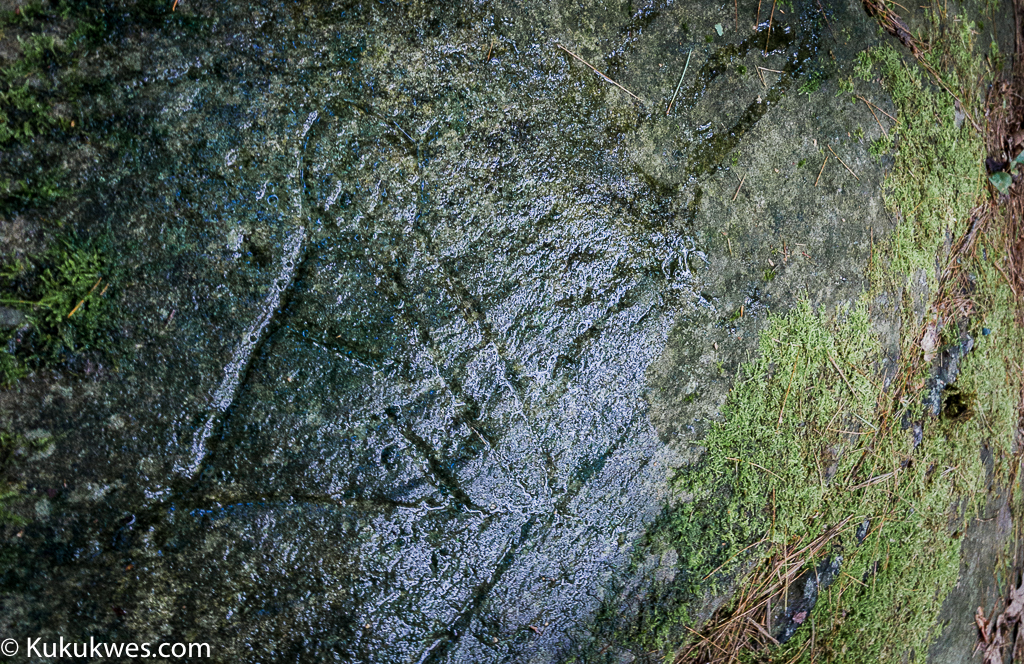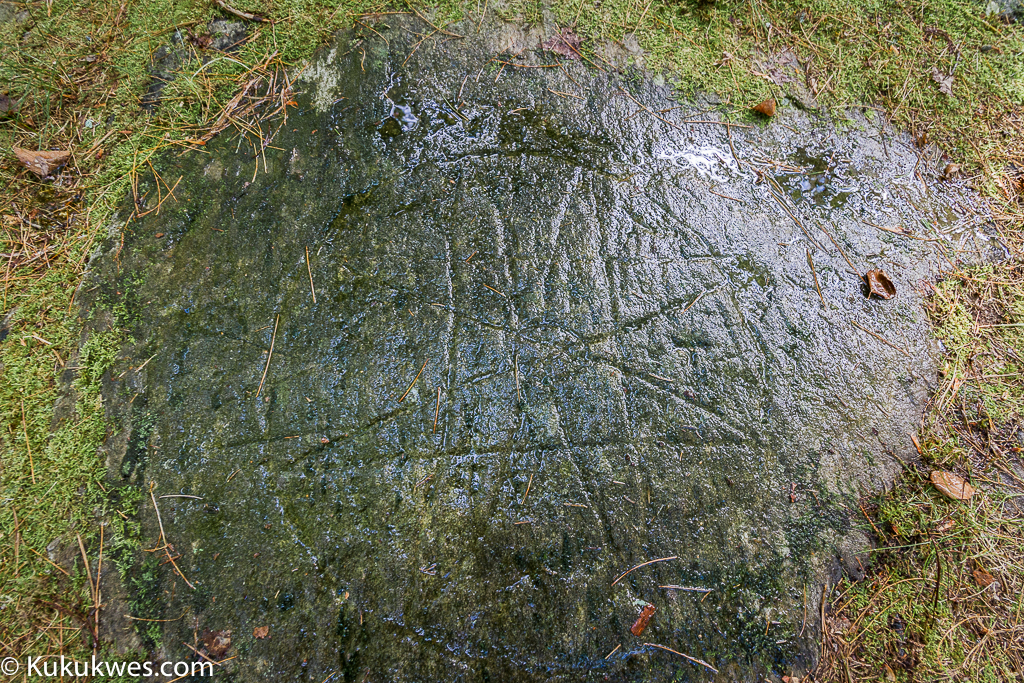
When Donna Morris looks at the Mi’kmaq petroglyphs at Kejimkujik National Park, she sees history.
“There’s a picture of a caribou. There’s a picture of a little missionary man that goes back to the French era which would be the 1700s,” Morris, 65, explains.
“So when I look at that, I think mostly of history. When I look at the caribou, I think about (a time) before the caribou and moose had disappeared.”
Morris, originally from the Indian Brook First Nation, has been working as an interpreter/coordinator at Kejimkujik since 2000. Part of her duties include offering tours of the Mi’kmaq petroglyphs, one of the park’s main attractions, to visitors and campers several times a week during the spring and summer months.
“Right now, the images are starting to fade a bit,” Morris explains. “We only have one particular area where we show the public and the other petroglyph sites are a little inaccessible due to the water and the distance of where they are.”
There are more than 500 Mi’kmaq petroglyphs at Kejimkujik. Some of them are estimated to be 800-1000 years old. All but one of the sites are blocked off from the general public. Park guides patrol the paths around the petroglyphs to make sure visitors obey the signage warning visitors not to enter and disturb the protected areas.
Those areas are protected, Morris explains, because the park wants to preserve the petroglyphs for as long as possible before they fade away due to erosion and exposure to the elements.
The only area open to guided public tours is a path that runs along Kejimkujik Lake that leads to a seating area where people can remove their shoes and socks before they can see the rock carvings. Guides like Morris then lead the tour groups onto several large, flat rocks where several petroglyphs are etched into the slate rocks that extend beyond the shoreline.
In 1995, Kejimkujik National Park was given the designation as national historic site because of the petroglyphs. A monument commemorating the petroglyphs stands just off the parking lot at the Merrymakedge Beach.
“Through education, we try to preserve as much as we possibly can,” Morris says. “And mother nature, even though she’s beautiful, she can be little rough on us.”
In the 1980s, Morris explains, Mi’kmaq elders met with park officials to discuss ways to preserve the petroglyphs. At the time, a decision was reached to let the petroglyphs erode “because they’re not of this time,” Morris says.
“Let them be here while they are and let the people see them, talk about them, educate the people about them,” Morris adds.
It’s the same philosophy being applied to preserve another set of Mi’kmaq petroglyphs in Bedford, N.S., Tim Bernard, Director of Culture and Heritage at the Confederacy of Mainland Mi’kmaq, says.
“That’s what the community members want,” Bernard explains. “ Keep it in it’s natural state and at the end of time when it no longer can be visible, maybe that was the purpose.”
The Bedford petroglyphs are located along a forested foot trail at the end of Emmerson Street.
The decision to keep the petroglyphs where they are, Bernard explains, was reached after in-depth consultation and two commissioned reports were conducted. The Assembly of Nova Scotia Mi’kmaq Chiefs instructed the Mi’kmaq-Nova Scotia-Canada Tripartite Forum’s culture and heritage working committee to come up with a solution.
As a way to protect the petroglyphs before they succumb to erosion, the Tripartite Forum decided to divert the trail around the stone carvings to prevent hikers from walking over them. An interpretative sign written in Mi’kmaq, English and French was placed near the petroglyphs.
The area in which the Bedford petroglyphs are located was designated as a national historic site in 1994. The area was also given further protection under Nova Scotia’s Special Places Act after the province purchased the land where the petroglyphs are located.
Bernard says a plaque will be placed at the site once the Nova Scotia chiefs finalize a design for it. Once that decision is made, Bernard hopes to hold a ceremony in October during Mi’kmaq History Month.
“That’s why we’re hoping to have it all wrapped into one. Have an official blessing of the trail on that day.”











